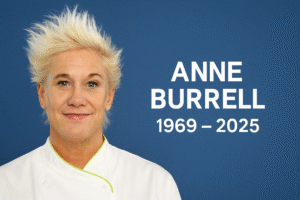Why 28 Years Later Isn’t Just Zombie Flick Redux it Hits Hard in 2025

I walked into the theatre thinking I’d watch another post-apocalyptic thriller. I left pondering mortality, memory, and how societies fracture when fear wins.Danny Boyle’s 28 Years Later doesn’t just revisit viral horror—it remixes it with emotional weight, visual flair, and ideas that linger.
What 28 Years Later Actually Is—Through a New Lens
Almost thirty years after Cillian Murphy’s doomed vigilante ran across an empty London, Boyle returns—not to ghost cities, but to primitive island life. The film shifts focus to Spike, a 12-year-old boy, his father Jamie (Aaron Taylor-Johnson), and a sick mother, Isla (Jodie Comer). That father-son road trip into a quarantined Britain is more than horror—it’s curiosity, hope, and grief—as they face evolved infected and a terrifying new alpha breed.
This isn’t your typical rehash. Critics call it “wilder, weirder, darker, bloodier”. It flips between chilling terror and tender fatherhood, spooky folklore and visceral scares. It’s not just a horror sequel—it’s generational storytelling at its best.
Spike & Jamie: A Human Core in the Chaos
Anyone who’s raised a teen knows the tension between toughness and tenderness. Jamie trains Spike to hunt infected with crossbows and medieval flair. But Spike’s not just learning survival—he’s learning doubt, empathy, even rebellion. There’s this gut-wrenching moment when he chooses mercy over brute force. You watch, thinking, I’ve made that choice too.
That scene alone hits harder than running zombies. It shows the monster isn’t always on screen; sometimes it’s in our head. And Spike’s realization forms the beating heart of this movie.
New Tricks for Old Horror—iPhone Cameras & Flash Memory
Boyle goes bold—cinematographer Anthony Dod Mantle and Boyle shot major parts on an iPhone 15 Pro Max. It gives grit and immediacy: phone glare, shaky frames, like a found-footage discovery. It contrasts beautifully with polished visuals of empty highways or pop song insertions.
Much like the original did with digital cameras, this film pushes visual style. And yes—the nostalgia of iPhone travel vlogs meets horror jolts. Blink and you miss a brutal kill; turn around, and you feel Spike’s confusion. It adds raw emotional texture.
What Critics Are Saying (Hint: Mostly A+)
Critics have been applauding the bold approach:
- Entertainment Weekly gave it an A-, praising its bold reinvention.
- Economic Times called it “wilder, weirder, darker, bloodier” and said it advances the franchise .
- The Houston Chronicle joked about “zombie genitals” — yet praised its emotional core.
The Rotten Tomatoes score? A whopping 95% .
But Not Without Growing Pains
If you’re craving smooth, linear storytelling, buckle up. The noise, symbolism, and abrupt cliffhanger left me disoriented at first. Some critics say pacing dips and character arcs stall. But those moments? They feel real. Like how grief or memory doesn’t order themselves—they jolt and fragment.
The Virus Metaphor—and World Context
Forget COVID comparisons—this virus quarantines a whole Britain, reflecting Brexit-era isolation. Homeland, divided, steeped in fear and folklore. The infected aren’t just mindless—they’ve evolved, reflecting how trauma can turn people, slow and fast. It’s a shocking mirror of real-world division and distrust.
Scariest Moments (Spoiler-Free)
- The causeway scene: flash flood + infected horde = visceral horror
- Introduction of Alpha infected—frighteningly intelligent beasts
- Dialogue exchanges with Ralph Fiennes’ Dr. Kelson: unsettling, poetic horror
When I saw that tower of skulls, I felt every parent’s worst nightmare—and realized fear is more than zombie virus.

Why You’ll Remember It
If you watch it late, you’ll wake in sweat. But I think you’ll also wake feeling something real. Grief, hope, legend—all knock at once. Jamie’s sacrifice, Spike’s dilemma—and that question: where does humanity end and survival begin?
Would I Recommend It To…?
- Horror Fans? Yes—but be ready for emotional trauma, not just gore.
- Parents? Maybe skip the 12–child rating; it’s heavy.
- Philosophers at heart? This film’s many-layered, even for Netflix watchers.
- Casual watchers? Watch first trailer—if it left you unsettled, gear up.
“What Happens Next?”—The Trilogy Premiere
Yes, there’s more: 28 Years Later: The Bone Temple wraps filming under Nia DaCosta in 2026 . No finality here—this feels like a cold winter’s night just beginning.
How This Connects to Your Life
If I were in your shoes, I’d ask: what are our own Alpha viruses? Rugged isolation? Online tribalism? Every community has its causeway that floods. When the world ramps up, will our bonds hold or crumble?
Reads More On Different Topics
- Anne Burrell Unexpected Farewell: America’s Beloved Chef Remembered
- Trump Mobile: Donald Trump’s New Wireless Venture Shakes Up the Telecom Market
The Bottom Line
28 Years Later isn’t just a sequel. It’s a rumble in your chest that evolves our viral horror into something murkier: coming-of-age, isolation, and emotional reckoning. It’s what happens when survival is just mistake away—and so are our own ghosts.




